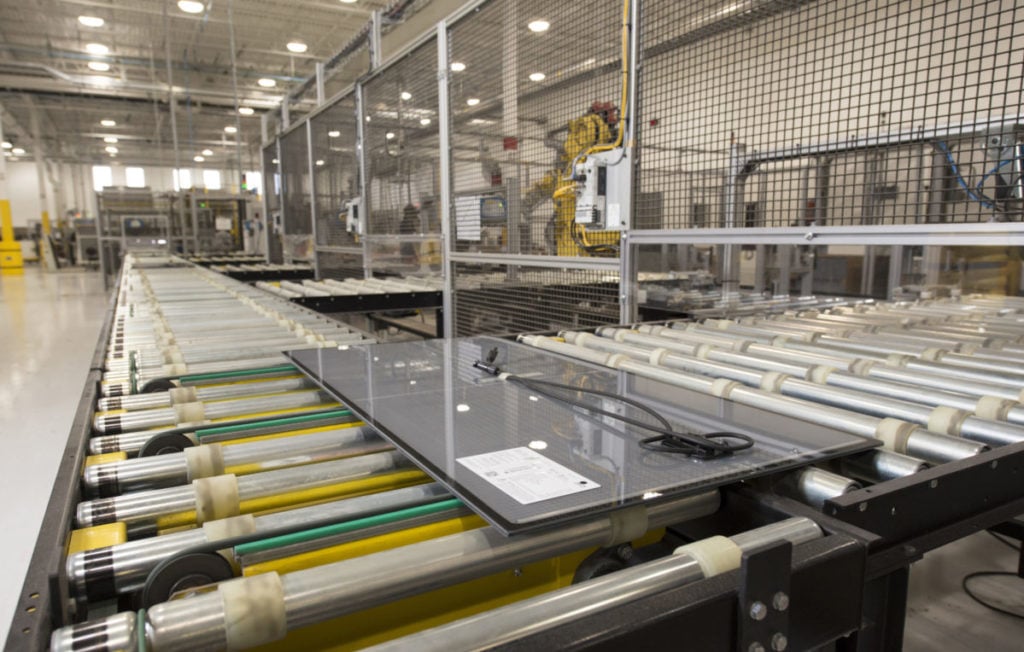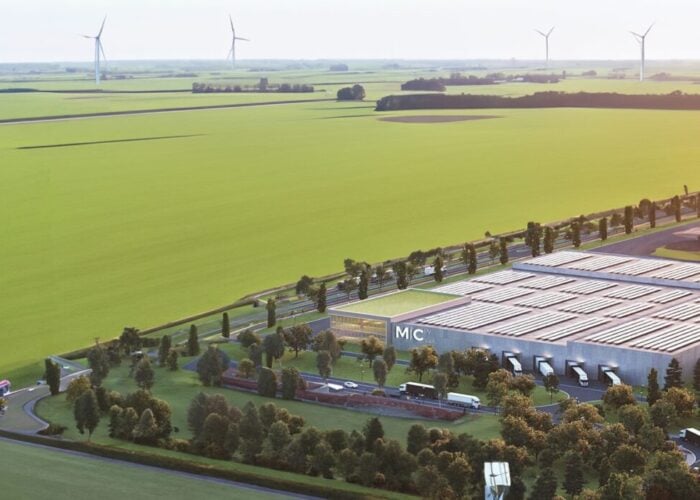
The US has been adding installed solar capacity as the Solar Energy Industries Association (SEIA) said it expects the solar industry to nearly triple in the next five years. In the first half of 2023, there is a cumulative installed capacity of 153GWdc in the US. The SEIA even expects this figure to grow to 375GWdc by the end of 2028.
With an ambitious goal of increasing the installed solar capacity, the US is also increasing its solar manufacturing capacity. According to SEIA and Wood Mackenzie, there have been a series of announcements for new solar manufacturing facilities across the supply chain stemming from the Inflation Reduction Act’s (IRA) manufacturing provisions and the anticipated increases in solar demand.
Try Premium for just $1
- Full premium access for the first month at only $1
- Converts to an annual rate after 30 days unless cancelled
- Cancel anytime during the trial period
Premium Benefits
- Expert industry analysis and interviews
- Digital access to PV Tech Power journal
- Exclusive event discounts
Or get the full Premium subscription right away
Or continue reading this article for free
If the announced plans for module manufacturing facilities materialise, the US, including Puerto Rico, would increase its total capacity from 10.6GW in 2022 to 108.5GW in 2026. The huge increase in manufacturing capacity cannot be achieved without the expanded manufacturing sector in the US.
Earlier this year, PV Tech reported that solar manufacturing jobs in the US will more than triple in the next ten years, growing from about 35,000 jobs today to 120,000 by 2033, according to SEIA.
The association said investing in the solar supply chain is also an investment in American energy independence, diversifying its energy mix and reducing reliance on foreign energy sources.
Recruitment strategy
Multiple solar companies, including Baywa r.e., have module assembly plants in the US. Alexandra Cabral, head of human resources for Americas at the company, says the firm is actively diversifying its workforce by recruiting professionals from various backgrounds, although the majority of its current workforce is in field construction jobs.
“We currently employ nearly 800 individuals in the US, operating across solar and wind development, operations, maintenance services, solar distribution, and engineering, procurement, and construction (EPC) contracting,” she says.
When a potential candidate boasts expertise in the solar industry, they will be highly more competitive than their counterparts who don’t have such knowledge and experience. However, Cabral says candidates with less experience can also succeed as not all positions require this specific experience.
“We value a diverse range of skills and expertise. Individuals with backgrounds in areas such as insurance, real estate management, logistics, and more can find valuable roles within the renewable energy sector. Furthermore, non-field positions such as accounting, communications, and project management also have transferable skills that are highly sought-after.
“This holistic approach reflects the versatility of the industry, contributing to economic growth,” Cabral adds.
Training and staff retention
Solar companies also have the responsibility to provide adequate training. BayWa r.e. facilitates the exchange of solar and wind expertise through in-person or online programmes, encouraging insights, ideas and knowledge to flow among colleagues across the APAC, AMER and EMEA regions.
Apart from BayWa r.e., Solar Module Super League member First Solar also invests in a largely American supply chain for its US manufactured PV modules, therefore producing its thin-film cadmium telluride (CadTel) Series 7 modules with more than 90% domestic content.
In its Sustainability Report 2023, First Solar says it spends over US$1 billion on US materials and services annually, supporting jobs in industries such as glass producers, steel producers, silica miners, soda ash miners, research scientists, truck drivers, and logistics workers.
“These industries that have historically been the lifeblood of the American economy are finding new purpose in the American Solar supply chain,” the company says.
Last year, First Solar had 5,500 full time and part time employees, up from 4,800 in 2021 due to its manufacturing expansion in Ohio. About 79% of First Solar’s employees worked in manufacturing, and the remainder of employees were in research and development, quality and reliability, sales, and general and administrative positions.
Moreover, First Solar’s training academy is available to all our employees from every level. Some hourly production operators became manufacturing managers and plant managers after receiving adequate training.
Retaining existing employees is equally important to every solar company as this could prevent the loss of experience and even the inability to meet business goals.
Therefore, First Solar provides a Global Career Framework for employees’ growth and development and a pay-for-performance model, rewarding employees for achieving goals and associated metrics. The framework also describes career pathways and job and skill requirements, and facilitates talent movement.
At BayWa r.e., Cabral defines retention as “providing a healthy environment where all team members can thrive”.
“Our Global Engagement Survey has been an important tool to allow employees to share about the wins and failures of our working culture and their lived experience of fair opportunities for development,” Cabral says.
Looking ahead, the solar industry in the US will likely continue to thrive, addressing multiple issues such as energy independence, economic growth, jobs, and environmental stewardship.
“While we can’t predict industry-wide growth, we are confident on a positive solar growth outlook and as the industry keeps growing,” Cabral concludes.
| Our publisher Solar Media is hosting the 10th Solar and Storage Finance USA conference, 7-8 November 2023 at the New Yorker Hotel, New York. Topics ranging from the Inflation Reduction Act to optimising asset revenues, the financing landscape in 2023 and much more will be discussed. See the official site for more details. |






